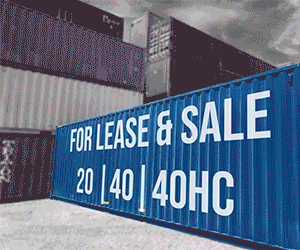By: Sara M. Siddiqui, Co-Founder- Inv-X Technologies Limited

The simple answer is NO.
So, if the answer is NO, why are organizations reluctant to embark on the journey of Supply Chain Sustainability?
It all comes down to understanding and knowing how and where to start. Often, organizations immediately seek external advice, which becomes the first cost element impacting the organization’s bottom line. While consultants can provide valuable insights, it is even more beneficial for organizations to have a clear vision of their goals and objectives.
Sustainability is not a difficult topic. The main thing to understand is that one cannot achieve sustainability alone within their organizational silos. Achieving supply chain sustainability requires all players and partners in the immediate and extended value chain to work together in cohesion.
Understanding Supply Chain Sustainability
Supply chain sustainability is the management of environmental, social, and economic impacts, and the encouragement of good governance practices, throughout the lifecycles of goods and services. The objective is to create, protect, and grow long-term environmental, social, and economic value for all stakeholders involved in bringing products and services to market.
Key Benefits of Supply Chain Sustainability
1. Cost Savings: Sustainable practices often lead to greater efficiency and reduced costs in the long run. For example, optimizing routes and loads can reduce fuel consumption and emissions, and using renewable energy sources can cut energy costs.
2. Risk Management: Sustainable supply chains are more resilient to disruptions. By diversifying suppliers and reducing reliance on single sources, companies can better withstand economic and environmental shocks.
3. Brand Reputation: Companies committed to sustainability can enhance their brand image and reputation. Consumers are increasingly demanding transparency and ethical practices from the companies they buy from.
4. Regulatory Compliance: Governments around the world are tightening regulations related to environmental protection and labor standards. Proactively adopting sustainable practices helps ensure compliance with these evolving regulations.
5. Innovation: Sustainability drives innovation. Companies that invest in sustainable practices often find new and improved ways to conduct business, leading to product and process innovations.
Common Misconceptions about Sustainability Costs
Many organizations believe that sustainable practices are inherently expensive. This misconception stems from the initial costs associated with implementing new processes, technologies, and systems. However, these costs should be viewed as investments rather than expenses. The long-term benefits and savings far outweigh the initial outlays.
1. Initial Investment vs. Long-term Savings: Initial investments in sustainable technologies and practices can seem daunting, but they often lead to significant cost savings over time. For example, energy-efficient equipment may cost more upfront but will reduce utility bills and maintenance costs in the long run.
2. Economies of Scale: As sustainable technologies become more widespread, their costs decrease. Early adopters may face higher costs, but as demand increases, production scales up, and prices drop.
3. Resource Efficiency: Sustainable supply chain practices focus on resource efficiency, which can lead to substantial cost reductions. For example, reducing waste and optimizing resource use can lower material costs and disposal fees.
The Role of Technology in Supply Chain Sustainability
Technology plays a crucial role in enabling and enhancing supply chain sustainability. Digital tools and platforms can provide the visibility and insights needed to manage sustainability initiatives effectively.
Inv-X: B2B Integrated Circular Supply Chain Digital Ecosystem
Inv-X has simplified the journey of supply chain sustainability for organizations. Inv-X offers a smart plug-and-play digital ecosystem through which organizations can reduce or potentially end their inventory obsolescence across their value chain. The solution improves the organization’s bottom line by disengaging and recovering tied-up working capital. Thus, with the Inv-X digital ecosystem, companies can earn while achieving sustainability.
1. Inventory Optimization: Inv-X helps organizations optimize their inventory levels, reducing waste and the costs associated with overproduction and excess inventory. By managing inventory more efficiently, companies can lower storage costs and minimize the risk of obsolescence.
2. Enhanced Visibility: The Inv-X platform provides real-time visibility into the supply chain, allowing organizations to monitor and manage their sustainability efforts more effectively. This transparency helps identify areas for improvement and track progress against sustainability goals.
3. Collaboration and Integration: Inv-X promotes collaboration among supply chain partners, enabling them to work together towards common sustainability objectives. This integrated approach ensures that all stakeholders are aligned and contributing to the overall sustainability goals.
4. Data-Driven Decisions: The digital ecosystem of Inv-X leverages data analytics to provide actionable insights. Companies can use this data to make informed decisions, optimize processes, and implement best practices in sustainability.
Conclusion
Embracing supply chain sustainability does not have to be expensive. By understanding where to start and leveraging the right tools and strategies, organizations can achieve sustainability without negatively impacting their bottom line. Inv-X exemplifies how a digital ecosystem can help companies reduce waste, optimize inventory, and improve overall efficiency while pursuing sustainability goals.
Incorporating sustainable practices into supply chain management is not only beneficial for the environment but also for the long-term success and resilience of the organization. The journey to sustainability may require initial investments, but the long-term rewards, including cost savings, risk mitigation, enhanced reputation, and compliance, make it a worthwhile endeavor.
Therefore, organizations should not shy away from supply chain sustainability due to perceived costs. Instead, they should embrace it as an opportunity to innovate, improve, and thrive in a rapidly changing world. With the right approach and tools like Inv-X, achieving supply chain sustainability is not only feasible but also profitable.










